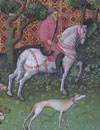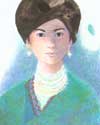 •
H O M E • W
R I T E R 'S N I B S • L
I N K S • B
L O G
• C O N T A C T
•
•
H O M E • W
R I T E R 'S N I B S • L
I N K S • B
L O G
• C O N T A C T
•
• S
C R I B B L I N G S •

PRIMITIVE ARCHER MAGAZINE
Hunting Through
Medieval Literature

INTERDISCIPLINARY
HUMANITIES
Peter Pan

HORSE
& RIDER MAGAZINE
A Whisper and a Prayer

COURSE CURRICULUM
ARTICLE
Christine de Pizan

GODDESSES
IN WORLD CULTURE
The Maiden with a
Thousand Slippers
"If
you steal from one author, it's plagiarism; if you steal from many, it's
research."
Wilson Mizner, 1876-1933, American Author
(Please use appropriate citations)
This essay appeared in the Interdisciplinary Humanities Journal, Spring, 2012 and is available through EBSCO databases, including Academic Search Premier.
CLASSROOM
COMICS:
Children's Medium and the New Literacy
by Doré Ripley, ©2012-2023
INTENSIVE
WRITING, or what was once called remediation, is filled with college students
who are uncomfortable with texts. They don't want to read them and they
don't want to write them because they haven't been successful with the
written word. When students arrive to class with a graphic novel in hand,
they think, "This class is going to be easy." And that is my goal. If
students believe intensive reading and writing is going to be fairly painless,
they will relax long enough to think critically about what is going on
in the comic panels. Instead of parroting back written text, they'll have
to interpret the panels and add to the conversation already taking place
within the pages of a graphic novel. But readers of comics must not only
peruse speech bubbles, they must also decode images, creating a rich interpretative
source in a textually deficient medium. Students must dig deep for responsive
ideas and they must become comfortable interpreting the visual/textual
blend presented on the comic's page, the twentieth century precursor of
twenty-first century mediums where visuals are dominant, a medium that
can be interpreted and analyzed like any other text.
When beginners
start perusing comics, they tend to skip the visuals and track text from
speech bubble to thought bubble to narration box. This seems a logical
sequence, since as Jacques Derrida points out; speech is privileged over
the written word because of our presence in the conversation. But sometimes
the written word is all that is left to a reader-we cannot talk to Shakespeare,
Plato, or Castiglione. In comics, speech is cued using bubbles, so when
we starting reading comics our western inclination towards speech turns
towards our academic predisposition towards text and sets us on the track
of the written word, especially the favored words of speech while ignoring
the what's going on outside the bubble.
So
how do visuals fit into this privileged sequence?
WANT TO READ MORE? Go to an EBSCO database such as Academic Search Premier for the full article.